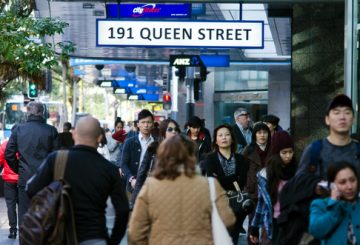Political parties are putting the issue of mental health strongly in focus.
But there’s a wave of youth anxiety, mental distress and worries about Covid-19 heading this way – and the services already in place are being overwhelmed.
Fears of failing at school, failing at life, and the big issue of climate change add to the issue that has being described as a pandemic by one top scientist.
“We’re not talking necessarily here about classic psychiatric illness, of depression, or severe anxiety – we’re talking about emotional disturbances sufficient to interfere with a young person optimally developing through life,” Sir Peter Gluckman says.
“With long term consequences to employment, to learning, to relationship building… to being satisfied with their lives.”
It’s estimated one-fifth of New Zealanders will experience a mental health challenge at any one time, a figure that extrapolates in young people to about 160,000.
The services are not there for them.
Today on The Detail, Sharon Brettkelly speaks to Josiah Tualamali’i, a 25-year-old high achiever who has gone through depression and changed direction in life to help others in the wellbeing and youth governance area.
He talks about the need for not just doctors and nurses, but others with lived experience to help support people going through mental struggles, and culturally appropriate services which are sorely lacking now.
As well, there’s the issue of access to services depending on where you are, and long waits for help.
“Who are we to tell someone who’s feeling very lonely, or who might be thinking about suicide, ‘we can’t help you right now’,” he says.
“The vibe that that sends to someone – ‘you’re not that important’, or ‘not important at the moment’ is really challenging, particularly when we’re also encouraging people around the country to ‘reach out for help’ or ‘turn to someone when you’re experiencing distress’. Those two things don’t really join together well.”
Journalist Laura Walters has been looking into mental health in a series of articles for Newsroom.co.nz.
She tells The Detail about the billions being allocated and good intentions that can’t be enacted because the personnel aren’t in place. But the political will for change is there.
“I would say we haven’t gone backwards,” Walters says.
She’s been covering mental health for years but says people are still telling the same stories.
“We’re hearing a lot about overcrowding in emergency mental health services, and acute mental health services and clinics and hospitals; we’re hearing about people who are feeling like they are reaching out for help and either not getting it or being pushed to the more acute part of the system where their case is escalated – and they don’t feel like that’s the healthiest or most helpful thing for them.
“We’re still hearing about the use of seclusion, restraint and compulsion at levels that are too high, and that are possibly in breach of UN conventions; we’re hearing about staff that are feeling stressed and unsafe in their workplace… and just a lack of staffing, a lack of services, a lack of funding.
“There’s never going to be enough money in mental health.
“You can say to people who are in distress or who have family members in distress, you know we are fixing the system but it’s going to take time… but that doesn’t help them in that moment.”
SOURCE: RNZ






























































